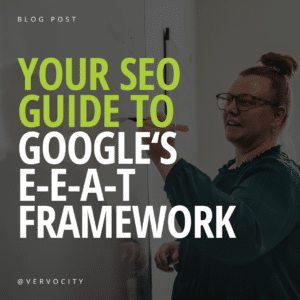It is very important to understand search engine optimization (SEO) basics and how they can affect the success of your business. Many businesses and organizations just feel their way through SEO and take their chances that a technique is working, but we’ve decided to take away the guesswork. Take a look at the following four steps that make up a good basic SEO strategy.
Build a list of keywords
It’s time to figure out what keywords or keyword phrases people are typing in search to get to your website or those of your competitors. It’s most likely that you’ll have to get beyond the general terms. For example, “flowers” works fine, but it is too vague and general. You’re sure to be buried under search results for more national competitors. “Mother’s Day flowers” or “spring flower arrangements” might be more profitable, earning you more qualified traffic. The competition for these terms is less fierce and have a significantly higher conversion rate.
Use Google’s Keyword Tool to find variations on keyword phrases that will make sense for your business. It allows you to put in your idea word or phrase and search other terms. Then you can compare the results by measuring volume and competition. Unfortunately, keyword discovery is an ever-evolving chore as popular keywords and keyword phrases can change. You should be monitoring your keywords regularly.
Revolve your content around your keywords
You should have a page of content for every SEO keyword or keyword phrase. The page should mention the phrase several times while incorporating it into relevant content. Include links to other relevant content on your website to provide added value to the reader.
Writing a blog can also help you rank better for your keyword phrases. Remember that you’re writing for the reader and not for the search engine, so give them lots of great information on the topic and try to work your phrase in when applicable.
To go a step further, there are on-page optimization steps that are important to SEO. Use your keyword in your title tag at least once, close to the beginning. Use your keyword prominently near the top of your page of content. Use your keyword three times or so in variations to make your content relevant. Use your keyword in the alt tags of your images on the page to help with search and image search to reach additional traffic. Use your keyword in the URL of your page. And finally, use your keyword at least once in the meta description tag to attract clicks by searchers. The meta description tag becomes the blurb of text shown in results by search engines.
Stay up-to-date on SEO best practices
SEO techniques are constantly changing to suit search engines that are ever changing. It can be difficult to stay up-to-date with current trends, but it’s important to keep a list of resources that you can visit regularly for tips. We watch Search Engine Land, SEOmoz, and SEObook to name a few.
Measure your SEO successes
SEO is a real time commitment and will be an ongoing process for your organization. For that reason, it’s important to know how things are going. Using an Excel spreadsheet, you’ll want to monitor how much traffic is coming to your website. You can track indexed pages, leads, inbound links, keywords, and your search engine rankings using Google Analytics for your website.
To monitor your rankings, log into your Google Analytics account. Click on your website and open the Search Traffic pull down to select Search Analytics. At this point, you can organize it by Queries or by Pages to see what’s being searched and where pages are being ranked respectively.
If SEO seems like a lot of work … it is. SEO is a time-consuming job that never ends. Whether you’ve given SEO a try and fallen short on time, or just not started in the first place, we can help. Call (217) 222-1451 to discuss Vervocity’s SEO Quincy, IL services today!











